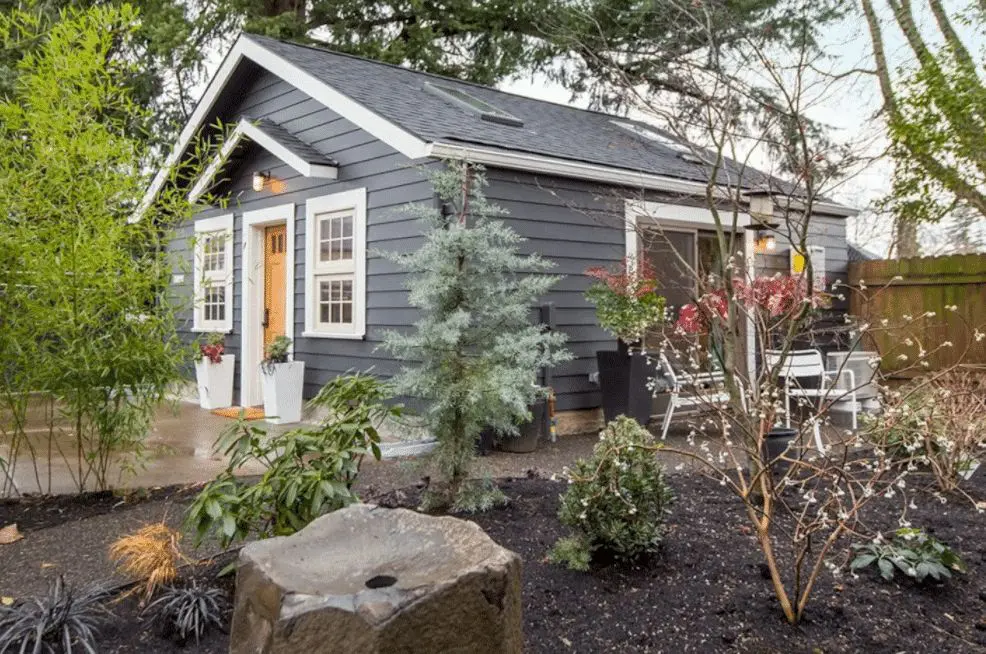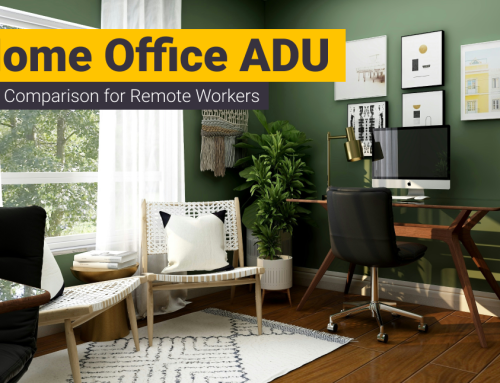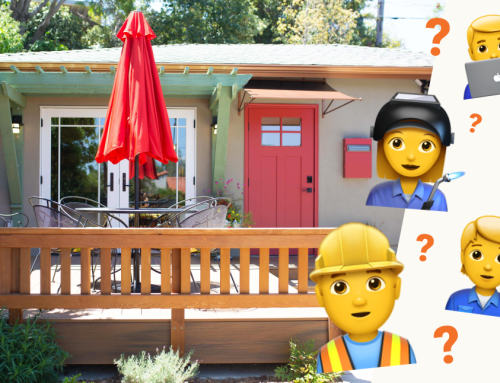Whether it’s on the news, on the radio, or over a cup of coffee with friends, we’re almost certain you’ve heard people talking about “accessory dwelling units” or “ADUs.” With the launch of SEVERAL new California state ADU laws within just the last few years, it’s easier than ever to add one of these units to your property. Backyard ADUs are springing up in almost every neighborhood.
But what the heck are they?
What is an Accessory Dwelling Unit (ADU)?
An Accessory Dwelling Unit (ADU) is an additional housing structure built on a property that already has a main home or main structure. You may have heard them referred to as granny flats, casitas, guest houses, or in-law suites. They can be built on a single-family lot or multi-family lot (duplexes count as multi-family).
An ADU has its own entrance, separate from the primary house, as well as a full kitchen, bathroom, and living space.
Accessory dwelling units can be rented year-round and add a lot of value to your property. They can be garage conversions, stand-alone units, attic or basement conversions, or be attached to the main house.
ADUs are exceptionally flexible, and most owners find that their use for the unit evolves over the years. The main reason people build ADUs in California is to house a relative, usually a parent but often an adult child. The second most common use is to rent for additional income.
If you’re interested in building an ADU on your property, Maxable can match you to vetted ADU designers and general contractors in your area. Tell us a bit about your project to get started.
What are the Benefits of an Accessory Dwelling Unit?
Accessory Dwelling Units (ADUs) offer a wide range of benefits for both homeowners and communities. For homeowners, ADUs provide an opportunity to generate passive income by renting out the space, while also adding flexibility to accommodate aging parents, adult children, or guests. They can boost a property’s value and serve as versatile spaces for home offices, studios, or short-term rentals.
From a broader perspective, ADUs contribute to increasing the overall housing supply without altering the character of existing neighborhoods. They offer more affordable rental options compared to traditional apartments and support sustainable living with their smaller footprint.
By making better use of existing lots, ADUs promote smart growth and help address housing shortages in urban areas.
Passive Rental Income
You can legally rent your ADU long-term anywhere in California and short term (less than 30 days) in some cities as well. That means extra passive income for you.
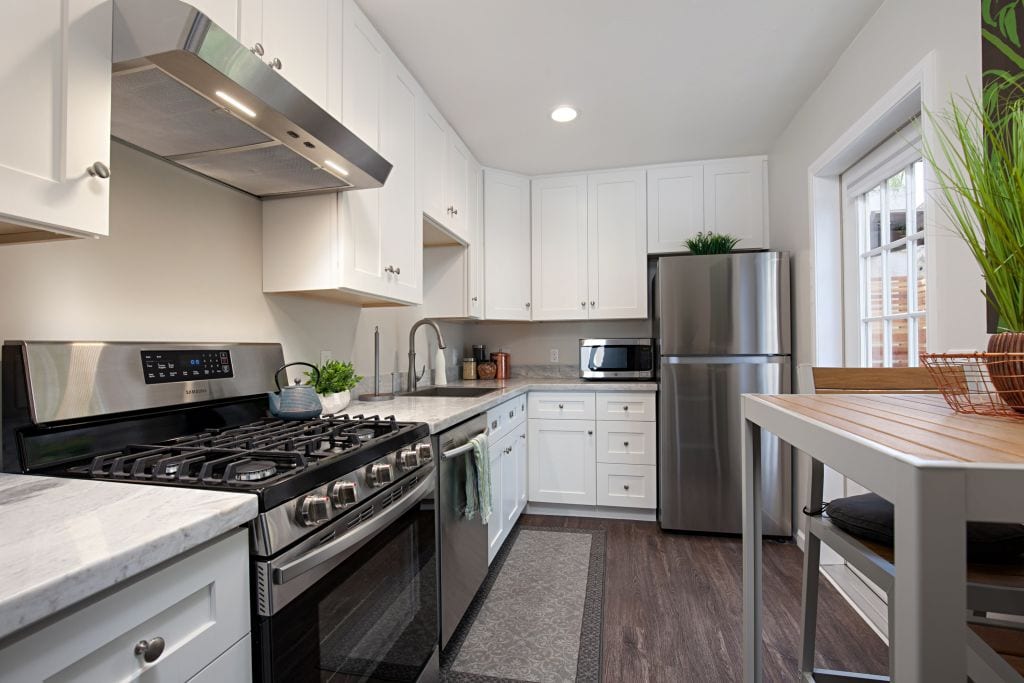
Some homeowners prefer to downsize and live in the ADU so they can rent out the larger main house for an even higher ROI.
Let’s look at some numbers. We’ll use San Diego as an example.
The average rent for a 1 bedroom apartment in San Diego is about $3,000 for a 870 sq ft unit. Annually, this will bring you $36,000, and even more if you decide to rent out your main house.
San Diego, CA Apartment Rent Ranges
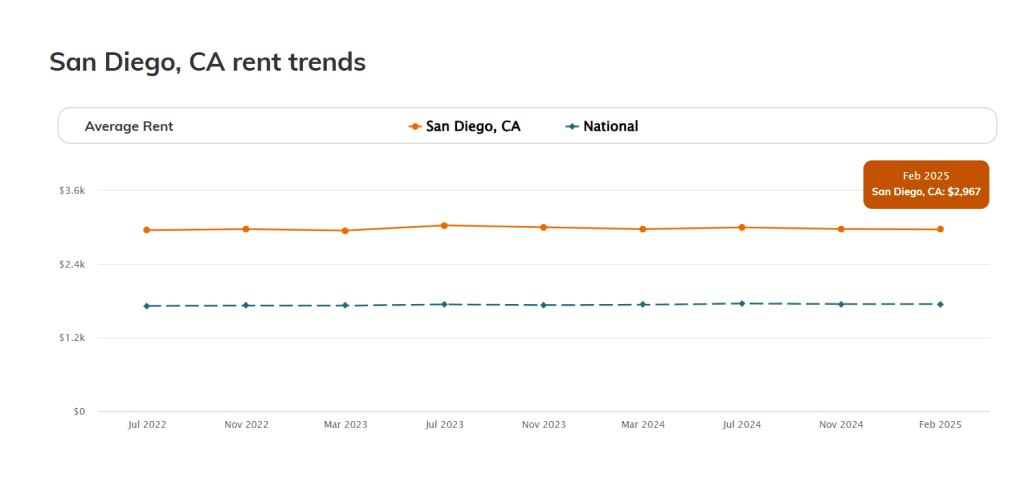
Source and graphic: RentCafe
We highly recommend researching average rental prices in your area to find out how much to charge for your ADU.
Home for Family
If you have aging or ailing family members, it’s only natural that you’d want to keep them close to take care of them. The other alternative, a nursing home, isn’t always ideal.
Visiting hours at nursing homes can be very limited, conditions are uncertain, and the homes can be extremely pricey.
In San Jose, you can expect to pay up to $600,000 over a 10-year period to house your loved one in a nursing home. That’s a big number!
That’s why an ADU is such an excellent option if you’re in this situation. Not only will you save money, but the ADU will also:
- Keep your family close
- Allow you to design the ADU with everything your aging family member will need
- House a caretaker

This homeowner built her ADU specifically for her stepmother and added all the amenities she would need to live comfortably while staying close and receiving the care the needs.
How Much Does it Cost to Build an Accessory Dwelling Unit?
Building an ADU will cost about $150,000 to $350,000, including all design, materials, labor, and permitting fees.
The cost of building an ADU will depend on your region, since labor and material costs vary throughout the state.
One main thing to keep in mind is that building an ADU is going to be vastly different from building a larger main house. Every cubic foot counts since you have to fit so much into a smaller space, which means that the cost per square foot will be a bit higher.
With that said, using starting cost is a good way gage how much your project will cost. In California, ADU costs start at about $150,000 and can increase depending on lot characteristics, level of finishes, ADU type, and even the time of year. Visit our blog on ADU cost breakdowns in California to get a better sense of what your project will cost based on your region.
How do you start an ADU?
All ADU projects start by defining what your goals are for your ADU. These goals will serve as a good baseline, especially in the design process. Why? Depending on what you intend to use your ADU for, your design choices, layout, and even permitting strategy may change. For example, an ADU meant for long-term rental might prioritize privacy and a full kitchen, while one for aging parents could focus on accessibility features like wider doorways and no-step entries.
Once your goals are clear, the next steps typically include finding a qualified designer or architect and bringing those ideas to life.
Feeling unsure about what your goals are? Not a problem. Luckily, Maxable can help you the whole way through. Let’s walk through it.
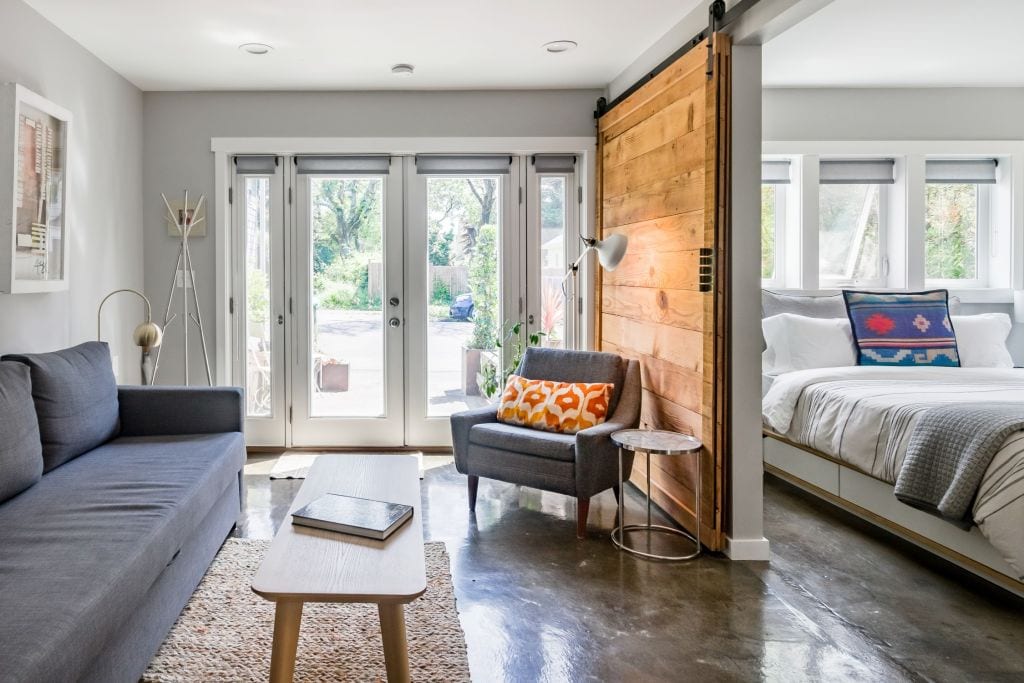
Step 1: Define what it is you want for your ADU
Here are just a few questions you should ask yourself:
- What are you using your ADU for?
- Who will be living there?
- What special amenities do you/they need?
- What details are you willing to sacrifice?
- How much are you willing to spend?
- Which is more important to you, aesthetics or function?
Take note of any other details that are important to your project. Remember, this is YOUR accessory dwelling unit. As long as you follow state and local regulations, you can design it any way you like. You have full reign over what to include in your ADU and it’s important to voice those desires to your ADU expert, which leads us to the next step.
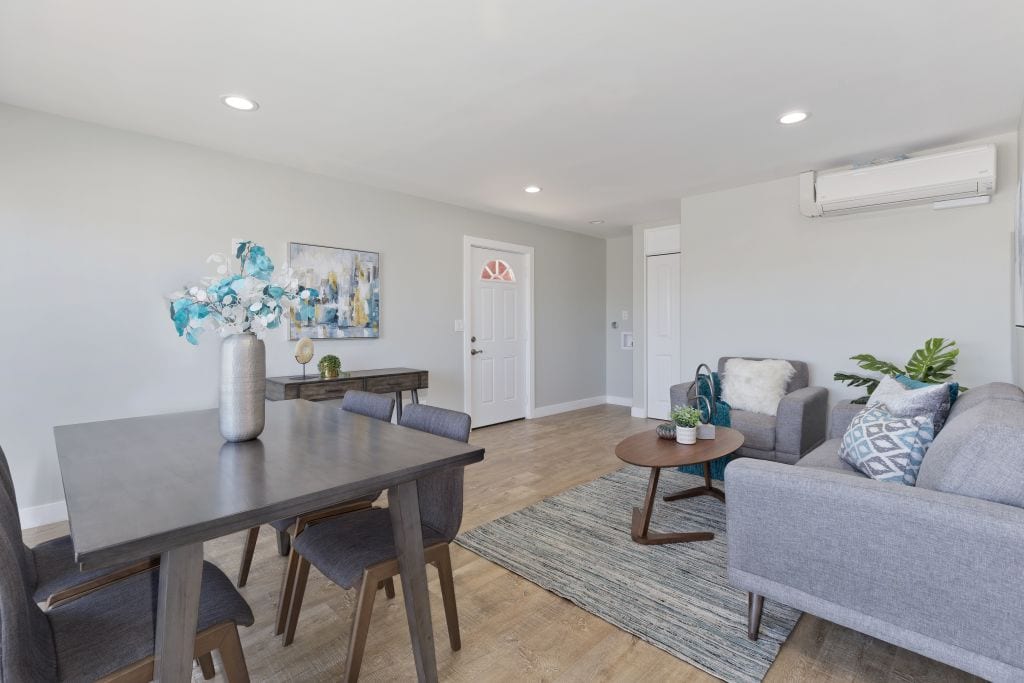
Step 2: Book an ADU Planning Call
Share your ideas and vision with the Maxable team. Based on our findings, we will match you to vetted designers and general contractors in your area.
All of Maxable’s design and construction partners have been heavily vetted by our team for experience, reliability, skills, and a great track record to ensure we’re connecting our clients with only the best ADU professionals in the industry.
Our network includes options for all projects from budget friendly to high end luxury providers. Click here to tell us a bit about your project and schedule a call.
Step 3: Work with your professionals
Once you’ve put together your team of ADU professionals, they’ll draft your design, submit it to the city for approval, and you can get your building permits!
This can be daunting, but remember that the Maxable team is with you every step of the way when you choose professionals from our network.
Our team of designers know the ADU regulations backwards and forwards, so should they run into any trouble with your city when submitting your plans, they’ll know what to do.

